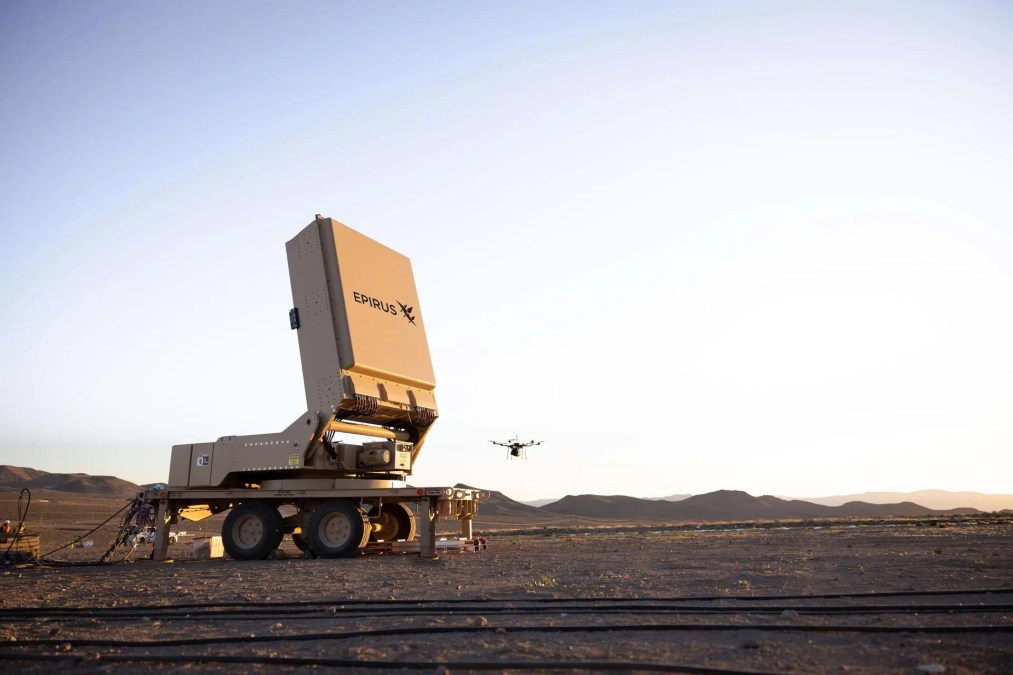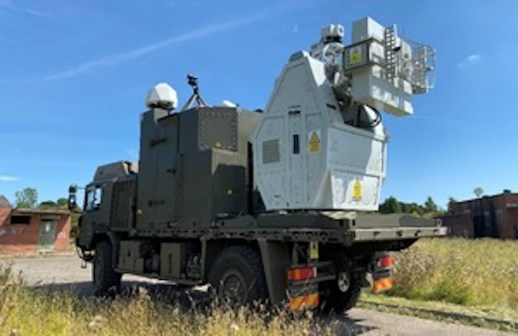Army awards $66M contract to Epirus for microwave weapon that can zap enemy drones

Epirus has landed a contract from the Army’s Rapid Capabilities and Critical Technologies Office for prototypes of its Leonidas high-power microwave system that can kill drones by zapping their electronics.
The award, announced by the company Monday, comes as the U.S. military is on the hunt for new capabilities to address the growing threat from adversaries’ unmanned aerial vehicles.
The Leonidas system will support the Army’s Indirect Fire Protection Capability-High-Power Microwave Program.
“As part of the Other Transaction Authority, Epirus collaborates with the RCCTO to rapidly deliver several prototype systems of Leonidas for $66.1 million in 2023 with options to acquire additional support services. Epirus plans to deliver and support prototypes of integrated HPM capability and, as part of the contract’s design, work with the RCCTO to transition Leonidas into a future program of record after successful demonstration of the prototypes,” according to a company press release.
The Pentagon is keen on directed energy weapons for counter-UAV missions because they are less expensive to operate than more traditional air-defense systems that fire missiles — also known as “kinetic” interceptors” — and can engage more targets because they have deeper magazines and don’t require reloading.
“Time and time again, we’ve seen that current air defense systems are ill-equipped to tackle the threat of autonomous drone swarms. This contract with the RCCTO brings new counter-swarm capability to the UAS fight with our cost-effective, modular and upgradable Leonidas systems,” Epirus CEO Ken Bedingfield said in a statement. “As the threat environment continues to evolve, so, too, will our capabilities, ensuring the U.S. Army is equipped with effective countermeasures to near-term and over-the-horizon electronic threats for decades to come.”
The Leonidas “counter-electronics system” has “demonstrated lethality against a broad range of UAS and electronic systems and achieved swarm defeat at multiple U.S. Government-sponsored test events, outperforming six down-selected systems,” per the release.
The latest iteration was unveiled in April 2022.
The Defense Department’s Joint Counter-Small Unmanned Aircraft Systems Office (JCO) conducted demonstrations of several high-power microwave weapons at Yuma Proving Ground, Arizona, last spring.
“The Epirus system was able to defeat targets in the range that is normally associated with what is currently in the field and has the promise to be a little bit more effective in the future,” Michael DiGennaro, head of the test team for the JCO’s acquisition and resourcing division, told reporters after the event concluded.
Leonidas is equipped with solid-state Gallium Nitride (GaN) power amplifiers. Artificial intelligence-enabled GaN semiconductors enable high levels of power density without special cooling tech, according to Epirus.
“The system is frequency agile and rapidly fires a barrage of unique waveforms to exploit the specific frequencies that UAS targets are most susceptible to. This enables tactically relevant counter-swarm ranges beyond small arms fire, even against diverse swarms,” according to a product datasheet.
Epirus is touting the weapon’s accuracy and targeting flexibility aided by “digital beamforming.”
“Digital beamforming enables pinpoint accuracy so that operators disable threats … and nothing else,” according to the datasheet, which says the technology can enable “programmable no-fly zones” where enemy drones can be targeted but friendly UAS can operate unscathed.
The system can be mounted on vehicles — including Army Strykers — or towed, and the weapon can be used “within minutes” after powering up. It also includes line-replaceable amplifier modules that can be serviced or replaced in under eight minutes, according to Epirus.






